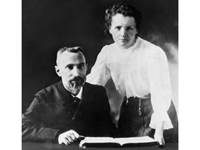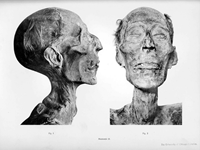An international team of scientists has identified an ancient human fossil unlike any hominin species previously found in China.
This fossil, which resembles neither Neanderthals, nor Denisovans, nor the lineages that split to form us, shows that the current version of the human family tree needs another branch.
The jaw, skull and leg bones of this as yet unclassified hominin species, called HLD 6, were discovered in Hualongdong in East Asia in 2019. Since then, experts from the Chinese Academy of Sciences (CAS) have struggled to match the remains to a known lineage.
The hominin's face is similar to that of the modern human lineage that diverged from Homo erectus some 750,000 years ago. However, the individual's lack of a chin is more similar to that of Denisovan, an extinct species of ancient hominin that split from Neanderthals 400,000 years ago in Asia.
Working with researchers from Xi'an Jiaotong University in China, the University of York in the UK and Spain's National Centre for the Study of Human Evolution, the CAS researchers believe they have discovered an entirely new lineage - a hybrid between the branch that gave us modern humans and the branch that gave us other ancient hominins in the region, such as Denisovans.
Historically, many Pleistocene hominin fossils found in China could not be easily included in any line of descent. As a result, such remains have often been explained as intermediate variations on a straight path to modern humanity, for example as an archaic example of Homo sapiens or an advanced form of Homo erectus.
But this rather linear, simplistic interpretation is controversial and not widely accepted. Although Homo erectus persisted in Indonesia until about 100,000 years ago, remains recently found in eastern China show more similarities with other, more modern hominin lineages.
Previously, genome studies of Neanderthal remains from Europe and Western Asia had found evidence for a fourth hominin lineage living in the Middle and Late Pleistocene.
However, this lost group has never been formally recognised in the fossil record.
Perhaps the new hominin remains found in China are a missing piece of the puzzle.
The authors of the analysis write that the fossilised jaw and skull belong to a human around 12-13 years old, and although the face has modern human-like features, the limbs, skull cap and jaw "appear to reflect more primitive features".
The results complicate the path to modern humans. The mosaic of physical characteristics found in these ancient hominins supports the coexistence of three lineages in Asia: H. erectus, the Denisovan lineage and this other lineage that is "phylogenetically close" to us.
Homo sapiens appeared in China about 120,000 years ago, but some of our 'modern' features seem to have been here long before that. The last common ancestor of H. sapiens and Neanderthals may have originated in southwest Asia and then spread to all continents.
Source: https://www.sciencealert.com/


 Nielawore
Nielawore











Yorum yazmak için lütfen giriş yapınız